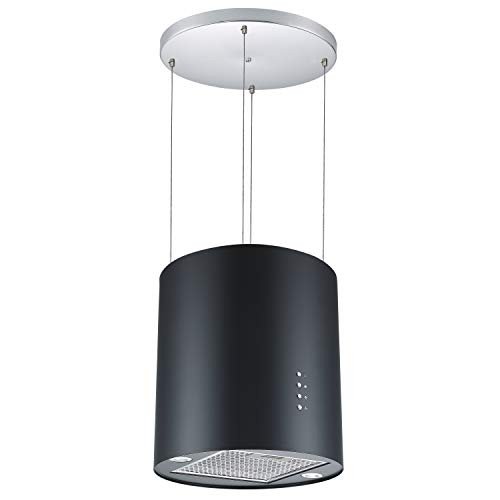5 Killer Quora Answers On Chimney Cooker Hoods
페이지 정보
작성자 Gabriella 작성일25-10-27 12:37 조회2회 댓글0건관련링크
본문
Understanding Chimney Cooker Hoods: A Comprehensive Guide
Chimney cooker hoods have actually ended up being a staple in modern kitchens, merging performance with trendy aesthetics. These ventilation systems are designed to remove smoke, odors, and airborne grease from the kitchen, enhancing air quality while matching kitchen décor. In this blog post, we will check out various elements of chimney cooker hoods, their benefits, types, setup pointers, and maintenance recommendations.

What is a Chimney Cooker Hood?
A chimney cooker hood, frequently called a chimney hood, is a kitchen home appliance installed above the cooking range to extract smoke, grease, steam, and odors while cooking. Its design includes a vertical structure looking like a chimney, giving it its name. These hoods can be ducted (venting air exterior) or recirculating (filtering and reintroducing air), dealing with varying kitchen setups.
Key Features of Chimney Cooker Hoods
| Feature | Description |
|---|---|
| Style | Sleek and modern, fits numerous kitchen designs |
| Sizes | Readily available in numerous widths and heights |
| Filters | Normally geared up with grease and charcoal filters for optimum performance |
| Controls | May consist of buttons, touch, or remote controls |
| Lighting | Functions integrated lighting for better exposure while cooking |
Advantages of Using Chimney Cooker Hoods
Improved Air Quality: Chimney hoods efficiently get rid of hazardous vapors, guaranteeing a healthier cooking environment.
Smell Elimination: They help eliminate cooking odors, preventing them from settling in furnishings or upholstery.
Grease Reduction: A chimney hood limitations grease buildup on surfaces, making kitchen cleaning much easier.
Boosts Kitchen Aesthetics: Available in various designs, they can act as a focal point in kitchen style.
Increased Kitchen Comfort: By improving air flow, they make cooking more enjoyable, particularly in confined kitchen areas.
Kinds Of Chimney Cooker Hoods
Chimney hoods been available in various types, each designed to suit specific requirements. Here are the most common types:
| Type | Description | Pros | Cons |
|---|---|---|---|
| Wall-Mounted | Set up against a wall above the cooking range. | Space-saving, stylish, and flexible. | Needs wall area; may be more expensive. |
| Island | Suspended from the ceiling above an island cooking range. | Provides visual appeal and effective ventilation. | Installation can be intricate; greater expense. |
| Under-Cabinet | Installed under kitchen cabinets. | Suitable for kitchens with limited area. | Less aesthetic appeal; may limit air flow. |
| Built-In | Integrated into kitchen cabinetry for a seamless appearance. | Surprise design, takes full advantage of space. | Usually more costly; may restrict power. |
Setup Tips for Chimney Cooker Hoods
Setting up a chimney cooker hood can be a straightforward procedure, however proper guidelines must be followed. Here is a list of necessary installation tips:
Select the Right Height: The ideal height for setup is typically in between 26-30 inches above the cooking surface area.
Consider the Ductwork: Ensure appropriate ducting remains in place if you go with a ducted model. Short, straight duct runs lessen loss of suction.
Confirm Electrical Needs: Check the hood's requirements for electrical requirements and guarantee correct circuitry.
Follow Manufacturer Instructions: Each brand name might have unique procedures; always refer to the producer's guide.
Secure Proper Ventilation: Ensure appropriate ventilation outside the home for ducted hoods, preventing backdrafts.
Frequently Asked Questions About Chimney Cooker Hoods
1. How do I know which size chimney hood to purchase?To determine the proper size, consider the width of your cooking range. The hood needs to match or be somewhat bigger than the cooking device, generally 3-6 inches wider.
2. Do chimney hoods work without ducting?Yes, recirculating (non-ducted) models can filter and purify the air before launching it back into the kitchen. However, they might be less efficient than ducted versions.
3. How typically should I clean up the filters?It's advisable to tidy grease filters on a monthly basis and replace charcoal filters roughly every 6 months, depending upon use.
4. Can chimney hoods be utilized over all kinds of cookers?The majority of models are ideal for gas and electric cookers. However, inspect the manufacturer's guidelines to make sure compatibility.
5. What is the typical expense of chimney cooker hoods?Rates differ substantially, varying anywhere from ₤ 100 for standard designs to over ₤ 2,000 for high-end, designer variations.
Upkeep of Chimney Cooker Hoods
To guarantee longevity and effective efficiency of chimney cooker hoods, routine maintenance is necessary. It can avoid breakdowns and preserve optimal duct efficiency.
Maintenance Checklist
- Clean the Filters: Remove and clean grease filters frequently.
- Examine the Fan: Inspect and clean the fan and motor to guarantee they work correctly.
- Inspect Ductwork: Periodically examine ducts for clogs or buildup.
- Polish the Surface: Use proper cleansing items to avoid scratches and preserve shine on the outside.
- Check the Lighting: Regularly examine light functions and replace burnt-out bulbs promptly.
Chimney cooker hoods are an integral part of modern kitchen style and functionality. They boost the cooking experience while efficiently improving air quality. With various styles and choices available, discovering the best chimney hood to match your needs becomes a possible task. By understanding their types, benefits, and maintenance, one can make informed choices, ensuring a beautifully aerated kitchen for many years to come.
댓글목록
등록된 댓글이 없습니다.
